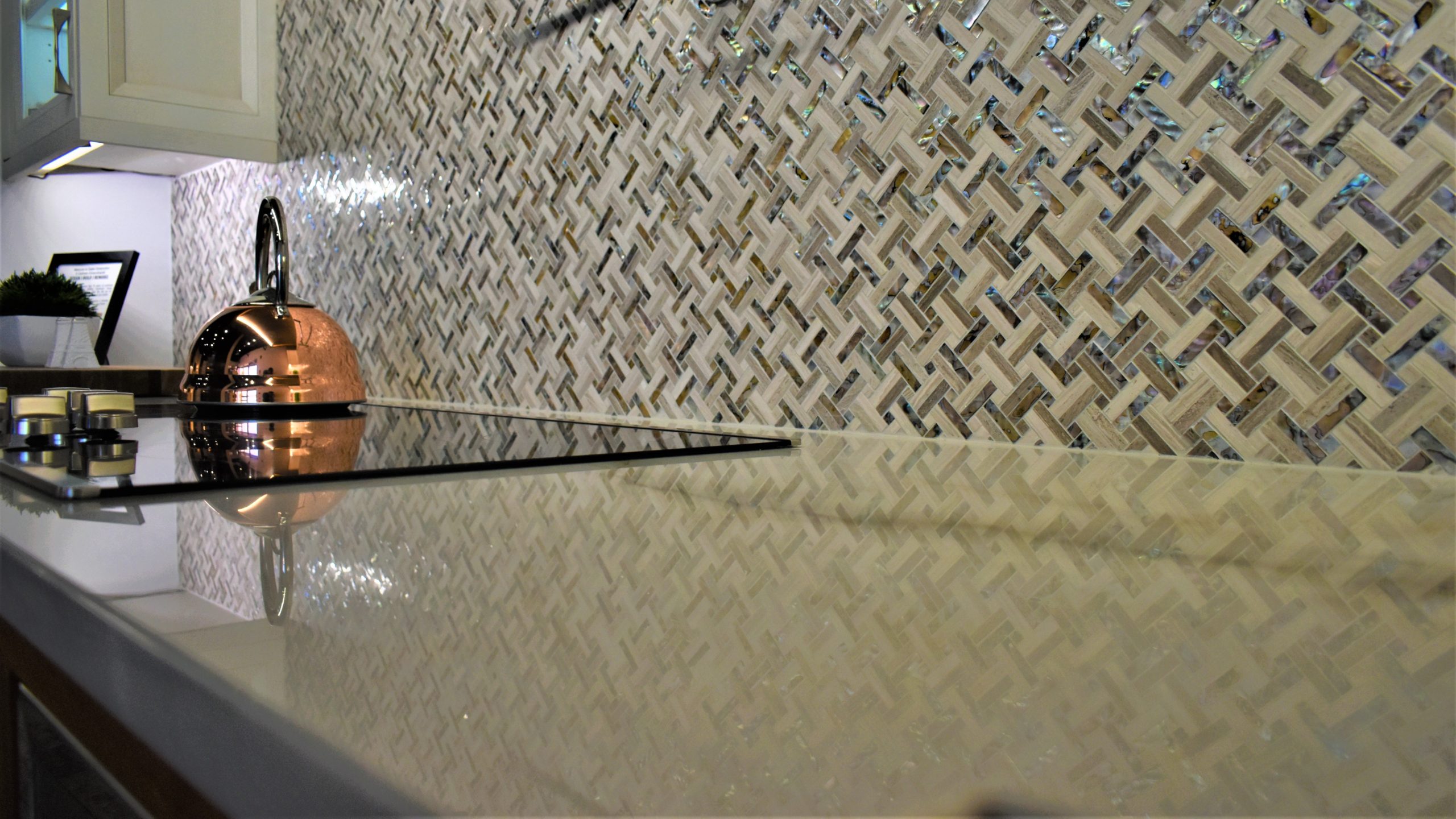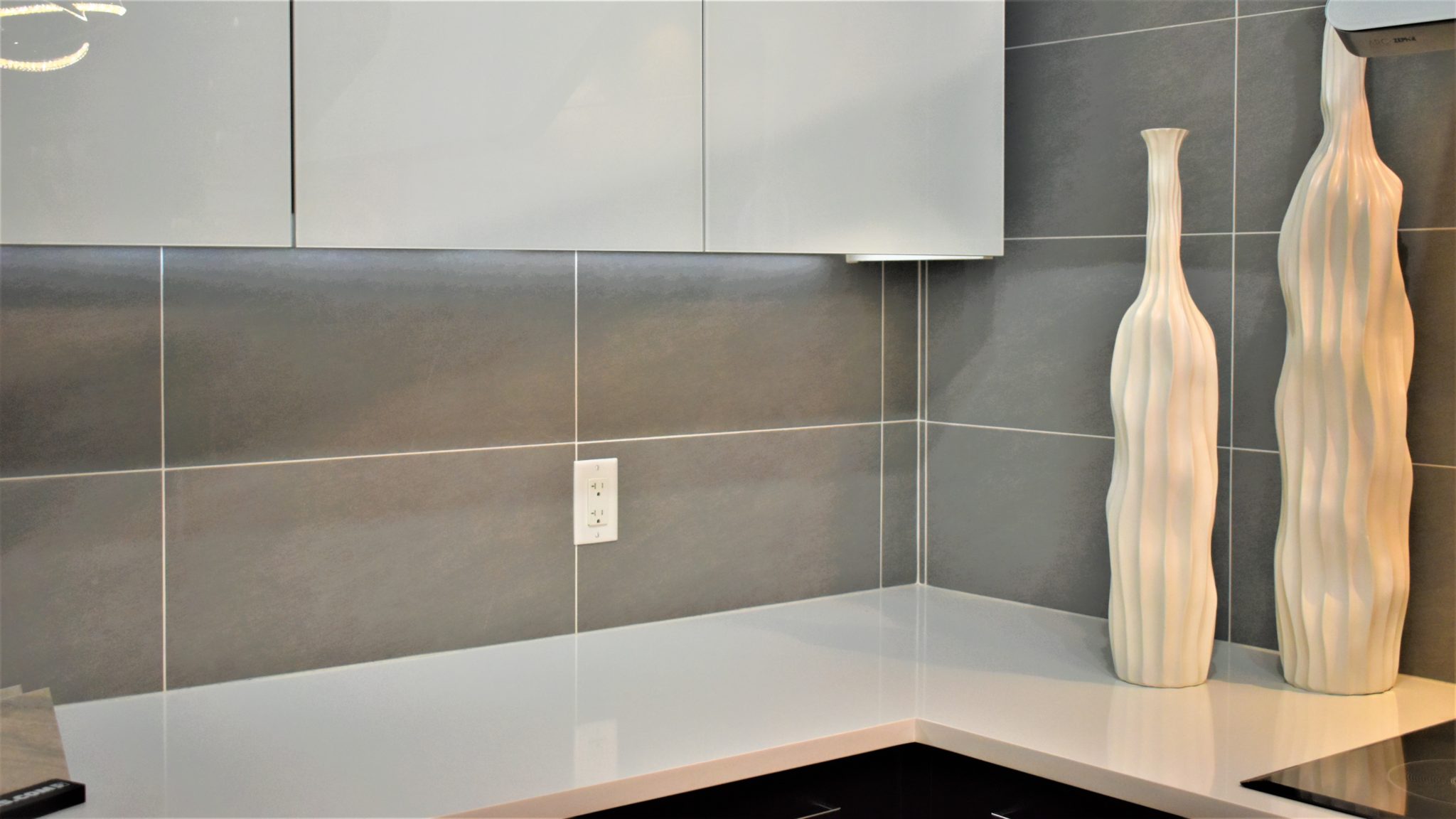Quartz & Quartzite
Many confuse quartz and quartzite countertops, thinking they’re more similar than different. Actually, they are two very different materials. Let’s dive into what each are and their differences.
Quartzite
Let’s start with quartzite. Quartzite is a natural rock. A quartzite countertop (as seen in the pictures below) begins as sandstone, which undergoes a natural process of heat and pressure and then fused with quartz crystals. Quartzite has a glassy appearance and resembles marble in some cases. This generally desirable appearance has made quartzite one of the most popular countertop materials. Quartzite typically comes in shades of white or light grey.

Quartz
A quartz countertop (as seen in the picture below) is made with the same crystals found in quartzite, but a man-made process binds the crystal with resins, pigments, and other materials like bits of glass. This process results in a more versatile and durable material that comes in a wide variety of colors and designs.

More Differences
The stylistic differences are remarkable too. Quartzite is sometimes mistaken for marble or granite, so if you’re looking for a natural look with movement, you’ll want a quartzite countertop. Quartz can be made to look like any stone though and is offered in many shades and patterns. If you have a specific color or pattern in mind, quartz is the material you’ll want to choose.
Another big difference is the care routine and resilience. Quartz is extremely durable so it’s a hard surface that’s non-porous and resistant to chipping, scratching, and bacteria. Quartzite is not as dense as quartz and prone to easily staining in a heavy-use area like the kitchen.
If you love to have several choices and a consistent look to your countertops, the first option might be the material for you. However, if you don’t mind a little upkeep in exchange for a natural appearance, then quartzite will be perfect for you.
More From the Cabex Team
Learn More About Quartz & Quartzite





